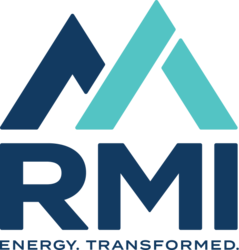Making Climate Part of Every Steel Loan
2023 Annual report
Read the first Sustainable Steel Principles annual report to learn about the climate alignment of banks’ steel industry lending portfolios, strategies for supporting clients through the transition, and developments in the decarbonization of the steel sector.
The Sustainable STEEL Principles are a set of commitments to adopt a common measurement and disclosure framework designed for banks to support the steel industry in forging a pathway to net-zero carbon emissions.






The Signatories of the Sustainable STEEL Principles commit to the following five principles:
Standardized assessment
to annually assess their climate alignment according to the guidance and methodology
Transparent reporting
to publicly acknowledge participation and disclose progress annually
Enactment
to source data first from Borrowers, and otherwise from the third-party data provider
Engagement
to engage clients on net-zero transition plans, available financial products, and expectations for emissions reductions
Leadership
to utilize the framework for advocacy, in the interest of the decarbonization of the steel industry
How the SSP were developed
This innovative, sector-specific standard was carefully crafted with input from a range of stakeholders to incentivize the decarbonization of the steel sector. A Working Group led by ING and co-led by Societe Generale, with participation from Citi, Standard Chartered, and UniCredit, and facilitated by RMI’s Center for Climate-Aligned Finance, designed the Sustainable STEEL Principles over a year of intensive collaboration.
Over 80 stakeholder organizations reviewed and informed the framework, including an Industry Group of steel companies; an Expert Advisory Group of technical experts and NGO representatives; and over 20 additional banks on the Review Group. The design was shaped by a close collaboration with the Net-Zero Steel Initiative, as well as the United Nations Environment Programme Finance Initiative.
The Sustainable STEEL Principles are governed by the Sustainable STEEL Principles Association, an independent, unincorporated association whose object is the management, administration and development of the Principles. It comprises Signatories as its members, and the administrative functions are managed by RMI, serving as the Secretariat. For more details, refer to the Sustainable STEEL Principles Governance Rules.
Decarbonizing Steel Is Crucial
Steel is used in everything from our cars and fridges to our buildings and planes. However, because of the sector’s reliance on coal, it is also the largest source of industrial CO2 emissions, with annual emissions exceeding that of India. The steel sector is responsible for 7% of all manmade carbon emissions today and demand for steel is projected to rise 30% by 2050.
Read more at
Resources
The Sustainable STEEL Principles Agreement Framework
Download the frameworkSustainable Principles 2023 Annual Report
Read the reportFor Signatories:
Partners
Remco Fisher, Climate Lead for the United Nations Environment Programme Finance Initiative (UNEP-FI)“For members of the Net-Zero Banking Alliance, sector-specific pathways, metrics and methodologies are crucial not only for setting but also for implementing credible decarbonisation targets. The steel-specific methodology in the Sustainable STEEL Principles offers banks a valuable and NZBA-aligned framework for effective net-zero client engagement in the steel sector.”
The following organizations endorse the general thrust of the Sustainable STEEL Principles in enabling lenders to align portfolios with climate targets by benchmarking progress and engaging clients in support of the net-zero transition.









Third-party data provider:

Pro bono legal counsel:
